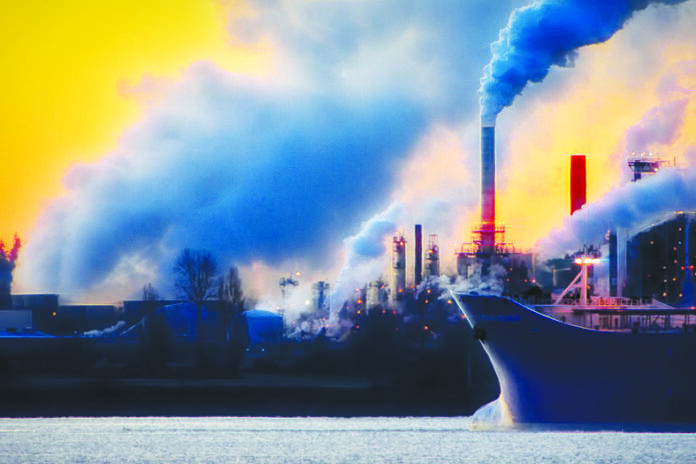Chemical pollution is the presence of harmful chemicals in the environment, which can be detrimental to human health, wildlife, and ecosystems. It is a broad term encompassing various pollutants from numerous sources. Understanding its types, sources, effects, and control measures is essential for addressing this global issue.
The main source of chemical pollutants include:
- HEAVY METALS: Such as mercury, lead, cadmium, and arsenic, which can accumulate in the environment and living organisms.
- PESTICIDES AND HERBICIDES: Chemicals used in agriculture that can contaminate soil and water.
- INDUSTRIAL CHEMICALS: Includes a wide range of chemicals used in manufacturing, such as PCBs (polychlorinated biphenyls), dioxins, and formaldehyde.
- VOLATILE ORGANIC COMPOUNDS (VOCs): Organic chemicals that easily vaporize and can be found in paints, solvents, and cleaning products.
- PHARMACEUTICALS: Medications that enter waterways through sewage and waste.
- PLASTICIZERS AND BISPHENOLS: Chemicals used in plastics that can leach into food and water.
- SYNTHETIC CHEMICALS: Man-made chemicals like PFAS (per- and polyfluoroalkyl substances), often used in non-stick cookware, waterproof clothing, and fire-fighting foams.
Chemical Pollution, on the other hand, is also a by-product of
- INDUSTRIAL PROCESSES: Manufacturing, mining, and chemical plants release various pollutants.
- AGRICULTURAL RUNOFF: Pesticides and fertilizers used in agriculture can run off into water bodies.
- WASTE DISPOSAL: Improper disposal of industrial, medical, and household waste.
- URBAN RUNOFF: Chemicals from vehicles, roads, and households washing into water systems.
- ACCIDENTAL SPILLS: Oil spills, chemical leaks, and other accidents can release large amounts of pollutants suddenly.
The impact of chemical pollutants on health is influenced by various factors, including the type of chemical, the level of exposure, individual susceptibility, and the presence of other health conditions.
As a part of remedy, international agreements, like the Stockholm Convention on Persistent Organic Pollutants, aim to reduce and eliminate the release of dangerous chemicals globally and collaboration on the issue between countries can easily manage transboundary chemical pollution. To conclude, chemical pollution is a multifaceted problem that affects all components of the environment.
It requires a coordinated approach from governments, industries, and individuals to mitigate its impact on health and ecosystems. In the context, ongoing research, public education, and adherence to environmental regulations are vital in managing chemical pollutants effectively.
Chemical pollution encompasses a wide range of harmful chemicals that contaminate our environment. These pollutants come from various sources and can have far-reaching effects on ecosystems, wildlife, and human health.
Some of the main kinds of chemical pollution are:
- HEAVY METALS: These include lead, mercury, cadmium, arsenic, and chromium. They often originate from industrial processes, mining activities, vehicle emissions, and waste disposal. In addition, heavy metals can accumulate in the food chain, posing significant health risks.
- PESTICIDES AND HERBICIDES: Widely used in agriculture, these chemicals help control pests and weeds but can contaminate soil, water, and air. They can harm non-target organisms, including beneficial insects, birds, and aquatic life.
- VOLATILE ORGANIC COMPOUNDS (VOCs): These are organic chemicals that easily vaporize at room temperature. Common sources include paints, varnishes, fuel combustion, and industrial processes. VOCs contribute to air pollution and can cause health problems like respiratory issues and headaches.
- INDUSTRIAL CHEMICALS: This category includes a wide range of chemicals used in manufacturing and industrial processes. Examples are polychlorinated biphenyls (PCBs), dioxins, and polycyclic aromatic hydrocarbons (PAHs). They can persist in the environment for long periods and are often toxic.
- PHARMACEUTICALS AND PERSONAL CARE PRODUCTS (PPCPs): Medications, cosmetics, and other personal care products can enter waterways through sewage systems. They can affect aquatic life and disrupt ecosystems.
- PLASTICIZERS AND BISPHENOLS: Common in plastic products, these chemicals, like bisphenol-A (BPA), can leach into food and drinks. They are associated with health concerns such as hormonal disruptions.
- SYNTHETIC NITROGEN COMPOUNDS: These are primarily from agricultural fertilizers. They can cause eutrophication in water bodies, leading to oxygen depletion and harm to aquatic life.
- PER- AND POLYFLUOROALKYL SUBSTANCES (PFAS): Used in non-stick cookware, fire-fighting foams, and waterproof materials, PFAS are known as “forever chemicals” due to their persistence in the environment. They are associated with various health risks.
- RADIOACTIVE CHEMICALS: These are by-products of nuclear power generation, nuclear weapon production, and medical applications. Radioactive contamination can have severe and long-lasting effects on health and the environment.
- CHLOROFLUOROCARBONS (CFCS): Once commonly used in refrigeration, air conditioning, and aerosol propellants, CFCs have been phased out due to their role in ozone layer depletion.
- ENDOCRINE DISRUPTORS: Chemicals that can interfere with hormone systems. They include certain pesticides, plasticizers, and industrial chemicals. Each of these chemical pollutants poses unique challenges. Their effects depend on factors like concentration, exposure duration, and the vulnerability of affected organisms and ecosystems.
Chemical pollution cast a wide range of adverse effects on human health, depending on the type of chemical, the level and duration of exposure, and individual susceptibility.
The significant health impacts are:
- RESPIRATORY PROBLEMS: Exposure to air pollutants like sulphur dioxide, nitrogen oxides, and particulate matter can cause or exacerbate respiratory conditions such as asthma, bronchitis, and chronic obstructive pulmonary disease (COPD).
- NEUROLOGICAL EFFECTS: Heavy metals like lead and mercury are neurotoxins that can impair cognitive development, particularly in children. They may also increase the risk of neurodegenerative diseases in adults, such as Alzheimer’s and Parkinson’s disease.
- CANCER: Certain chemicals, such as benzene (a VOC), asbestos, and some pesticides, are known carcinogens. Prolonged or high-level exposure can increase the risk of developing various types of cancer, including lung, breast, and bladder cancer.
- ENDOCRINE DISRUPTION: Chemicals like bisphenol A (BPA), phthalates, and certain pesticides can interfere with the hormone system. They can lead to reproductive health issues, developmental problems in children, and increased risk of diseases like diabetes and thyroid disorders.
- SKIN AND EYE IRRITATION: Direct contact with certain chemicals, such as chlorine, can cause skin irritation, rashes, and chemical burns. Eye irritation and damage can also occur with exposure to various chemical pollutants.
- CARDIOVASCULAR DISEASES: Air pollutants, particularly particulate matter, have been linked to an increased risk of heart attacks, strokes, and other cardiovascular diseases.
- LIVER AND KIDNEY DAMAGE: Some chemicals, like certain heavy metals and industrial solvents, can be toxic to the liver and kidneys, leading to organ damage and dysfunction.
- REPRODUCTIVE AND DEVELOPMENTAL ISSUES: Exposure to certain chemicals during pregnancy can affect fatal development, leading to birth defects, low birth weight, and developmental delays. It may also affect fertility in both men and women.
- IMMUNE SYSTEM IMPAIRMENT: Exposure to certain pollutants can weaken the immune system, making the body more susceptible to infections and reducing its ability to fight off diseases.
- PSYCHOLOGICAL EFFECTS: Chronic exposure to pollution can also have psychological effects, contributing to conditions such as depression and anxiety.
Thus, the impact of chemical pollutants on health is influenced by various factors, including the type of chemical, the level of exposure, individual susceptibility, and the presence of other health conditions.























